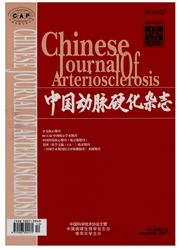

 中文摘要:
中文摘要:
内质网是动态的膜性细胞器,参与蛋白质的折叠、钙离子稳态的维持和脂质的生物合成。各种干扰内质网功能的病理生理学因素,均可破坏内质网的稳态而触发内质网应激。适当的内质网应激通过激活未折叠蛋白反应促进内质网稳态的恢复,但过度内质网应激则触发内质网相关凋亡途径,参与多种疾病的发生发展。近年研究发现,内质网应激参与动脉粥样硬化、高血压、血管钙化和冠状动脉成形术后再狭窄等多种血管损伤性疾病的病生理过程。本文就内质网应激在血管损伤性疾病发病机制中的研究进展作简要综述。
 英文摘要:
英文摘要:
Aim The endoplasmic reticulum (ER) is an organelle involved in protein folding, calcium homeo- stasis, and lipidbiosynthesis. Various factors that interfere with ER function disrupt ER homeostasis, which result in ER stress. The unfolded protein response(UPR) is initiated to adapt to the changing environment, and reestablish normal ER homeostasis. Prolonged and excessive ER stress triggers cell suicide, usually in the form of apoptosis, and plays an im- portant role in many diseases. It is found in recent studies that ER stress is involved in the pathogenesis of injured vascu- lar diseases such as atherosclerosis, hypertension, vascular calcification, and restenosis. Here, we reviewed recent progres- ses in ER stress and injured vascular diseases.
 同期刊论文项目
同期刊论文项目
 同项目期刊论文
同项目期刊论文
 Adrenomedullin up-regulates osteopontin and attenuates vascular calcification via the cAMP/PKA signa
Adrenomedullin up-regulates osteopontin and attenuates vascular calcification via the cAMP/PKA signa 期刊信息
期刊信息
